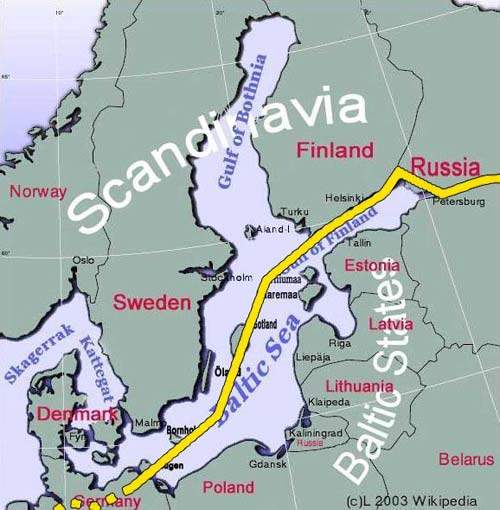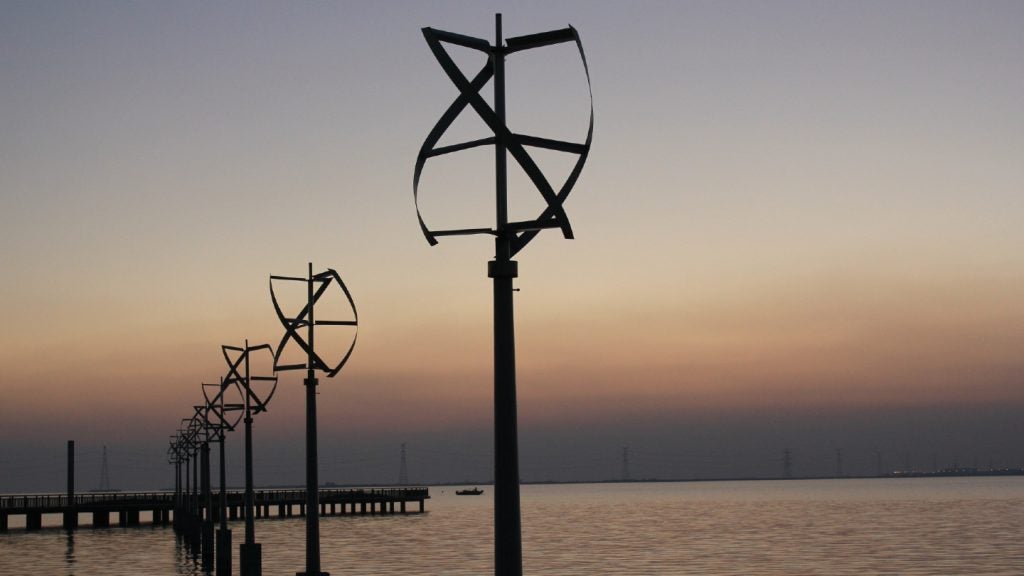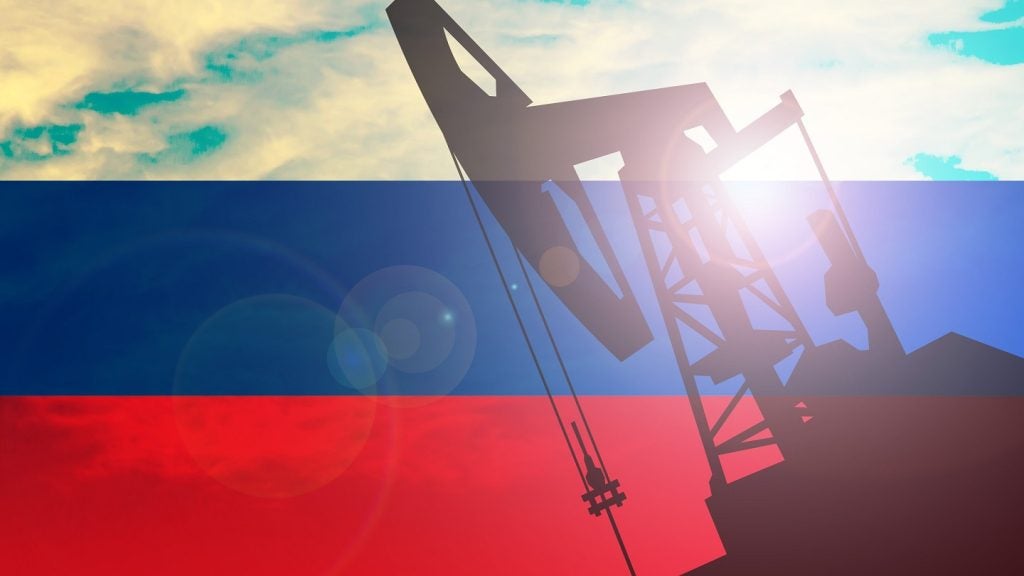
Russia’s economy is heavily dependent on oil and gas exports. The EU currently imports more than 30% of its natural gas from Russia, and, according to EurActiv, this figure is expected to rise to 60% by 2030.
Data published recently by the US Department of Energy (DoE) shows that Russia’s recent economic growth has been driven primarily by energy exports, with oil and gas accounting for about 20% of national income in 2005. But Russia is not without its challenges in this economy that quite often takes on a life of its own.
Privatisation is detracting from state-owned control and, in many cases it seems political control is rising to justify this. But with so much of the golden black resource off its shores, and some of the biggest name projects in the industry, any level of uncertainty about the industry’s future in Russia is going to raise a lot of eyebrows.
OFFSHORE RUSSIA – WHERE THE RESERVES ARE
In his 1999 study of the offshore oil and gas industry, ecologist Stanislav Patin gives details of hydrocarbon reserves in around 90% of offshore areas within Russian jurisdiction, covering some five to six million square kilometres in total. Recoverable reserves were in the early 1990s estimated to be up to 100 billion tonnes of oil equivalent (btoe), with 80% in the form of natural gas.
See Also:
In the western Arctic there are two massive hydrocarbon-bearing basins on the shelves of the Barents and Kara Seas in western Siberia, holding 50 to 60btoe. In the Far East and eastern Siberia there are 1.5 million square kilometres of interest, concentrated mostly in the Sea of Okhotsk near Sakhalin, and the Bering, Chukchi and East-Siberian Seas.
How well do you really know your competitors?
Access the most comprehensive Company Profiles on the market, powered by GlobalData. Save hours of research. Gain competitive edge.

Thank you!
Your download email will arrive shortly
Not ready to buy yet? Download a free sample
We are confident about the unique quality of our Company Profiles. However, we want you to make the most beneficial decision for your business, so we offer a free sample that you can download by submitting the below form
By GlobalDataof Russia’s national income in 2005.”
Owing to disputes with Japan and a number of oil spills, Sakhalin is the most widely reported Russian offshore development.
The Sakhalin shelf is estimated to contain around 6.5btoe, or nearly twice the remaining reserves in the North Sea.
Smaller-scale developments exist in the Caspian and Baltic Seas and in the Sea of Asov. The shallow shelf of the Caspian Sea is the most productive of these, and has recoverable reserves estimated at two to three btoe, with oil itself accounting for 70%.
WHO’S WHO?
Dominating the scene is Russia’s state-controlled gas producer and distributor Gazprom, with a 16% share of the world’s gas reserves, 20% of global production and more than 90% of the domestic market. Gazprom exports to 32 countries and the company is valued at around €220bn.
Together with a number of other firms, Gazprom is currently building a 1,200km gas pipeline running through the Baltic Sea from Vyborg in Russia to Greifswald in Germany.
Due to come onstream in 2010, the Nord Stream pipeline will eventually be fed largely from the Shtokman field, which lies around 550km north of Murmansk. French firm Total was recently chosen by Gazprom as partner for the initial phase of the development.
Despite its name Gazprom is also involved in the oil business, and the company’s acquisition of Sibneft in 2005 makes it the fifth-largest player in the Russian oil market in terms of production.
Russia’s two leading oil companies are Rosneft and Lukoil, each with activities ranging from exploration and production of oil and gas to retail sales and the manufacture of petrochemical products. Rosneft is valued at €61bn and Lukoil €54bn.
Lukoil controls about 1.3% of global oil reserves and 2.1% of production, and its share of the Russian domestic market is 18% of oil production and 18.3% of refining capacity. State-owned Rosneft is involved in a number of offshore projects, and acquired the bulk of Yukos’ assets following political and financial scandals that led to that company’s liquidation in September 2006.
Sakhalin Energy, a consortium led by Royal Dutch Shell, is responsible for hydrocarbon resources around Sakhalin Island in the northern Pacific Ocean. The Sakhalin II project is the most international in scope of all Russian offshore developments, with licences held by ExxonMobil and Shell amongst others.
RUSSIA’S POLITICS AND ECONOMICS
Gazprom and Rosneft aside, privatisation has reached the stage where the state has effectively lost full financial control of the Russian oil and gas industries. Political control is another matter.
The lifting of export quotas and liberalisation of the domestic fuel market since the mid-1990s have helped created a quasi-free market in the oil and gas sector. Participation in the Russian market by foreign oil companies is significant, but political instability has led to a number of problems.
Domestic gas prices in Russia are currently only around 15% to 20% of the market rate in the west, and this is due to government control of Gazprom. Independents may operate in a largely free market, but Gazprom’s dominance means that the going rate for independent gas is only around 10% to 15% higher than the state-regulated price.
the Russian state has effectively lost full financial control of the country’s oil and gas industries.”
The DoE report, referred to above, notes that low gas prices have limited the industry’s ability to finance capital spending, and raising domestic prices towards parity with European market rates is now official policy. At the end of last year, the Russian government resolved to increase prices, beginning with an initial hike of about 15% in 2007. At the same time, the state will cease imposing price caps by 2013.
Back in 1994, when Russia had only just emerged from decades of dictatorship, the government welcomed, with open arms, foreign firms offering to develop its offshore oil and gas industry. As a sweetener, Russia agreed not to impose taxes on the energy companies until they had recouped their costs.
With long delays and spiralling project costs, the government then changed track and began to consolidate its control over the industry as a whole and favour domestic firms. The irony is that with such resource nationalism, government revenues are lower now than they would be with greater private investment.
Russia has in recent times raised taxes on oil and gas profits but it is well to remember that Norway imposes a 78% tax on oil and gas companies operating in its sector, and other countries have negotiated agreements that include high tax rates. As noted by the Economist, predictability and stability form the basis of the most successful agreements between energy companies and governments.
ACCIDENTS DURING OFFSHORE DEVELOPMENTS
Accidents and environmental damage invariably accompany heavy engineering projects, and offshore oil and gas developments are no exception. Adverse environmental impacts could be very serious, and Norwegian environmentalists Bellona note that Russian companies do not have a particularly good record when it comes to oil spills.
Under Russian law, operators of oil and gas facilities are required to formulate response plans for minimising the consequences of industrial accidents. But according to a report prepared for the Energy Sector Management Assistance Programme, in half of the reported incidents there was no cleanup effort.
One accident in September 2004 involved a dredging vessel belonging to Sakhalin Energy which ran aground causing a Category 2 oil spill at Kholmsk. According to Sakhalin Environment Watch, the spill stretched along 5km of coast, and highlighted the lack of an effective spill response plan.
Critics charge that Sakhalin Energy’s emergency response equipment was stored on the other side of the island, and its specialists did not examine the scene until nine hours after the accident. They add that containment booms were not put in place for 48 hours.
In December 2006 the Russian authorities temporarily suspended a number of water-use licences held by Shell and increased pressure on foreign investors to cede some control over the project. That move led to accusations from industry insiders that the government was using environmental concerns as a proxy for maintaining control over the activities of multinationals involved in the project.
The most recent accident involved the leakage in June 2007 of more than 65t of oil from a well into the Piltun river – a spawning ground for endangered fish species. Two hectares were contaminated as a result of the spill, and the case is now in the hands of the Sakhalin prosecutor and national environmental protection agency.
RUSSIA’S OFFSHORE TECHNOLOGIES
Russian offshore oil and gas developments are mostly located in regions with extreme weather conditions. Around Sakhalin Island, for example, the sea freezes in winter and in summer the temperature can reach 30°C. Geological conditions are also somewhat lively, with a high risk of earthquakes due to tectonic activity along the North America-Eurasia plate boundary.
Central to the Sakhalin II project is a liquefied natural gas plant that will produce 9.6 million tonnes of LNG a year. This will be shipped to markets in the Asia-Pacific region, including the US. The LNG plant – which will cover a 490ha site at Prigorodnoye in the largely ice-free Aniva Bay at the southern tip of Sakhalin Island – will have two storage tanks of 100,000m³ capacity. The plant is scheduled to begin operation in 2008.
As for the developments in western Siberia such as the Shtokman field that will feed the European market, the biggest obstacles are million-tonne icebergs, pack ice drifting at up to a metre a second, and sea depths of 350m.
When complete, the Shtokman field will comprise over 150 wells. Tension leg (TLP) and Spar-type platforms – floating constructions moored to the sea bed – are the obvious choices for drilling platforms in such conditions, but no final decision has been made by Gazprom on the technologies to be used.
Gazprom expects production to begin by 2013–2015 but Bellona, which is part-funded by the Norwegian oil sector, believes that the field will not come on-stream before 2035 if the Russians insist on doing everything themselves.
RUSSIA – TOWARDS THE FUTURE
It is said that all that’s certain is that nothing is certain, and when it comes to the Russian energy sector this is most certainly true. The potential in new offshore oil and gas developments is enormous but a common view among western commentators is that the unwillingness of the Russian state to fully embrace the market and allow industry to take the initiative threatens to stall progress.
Perhaps the last word should be left to the Economist: “Russia’s ability to cause harm to itself and to others in the cause of proving its greatness should never be underestimated.”







